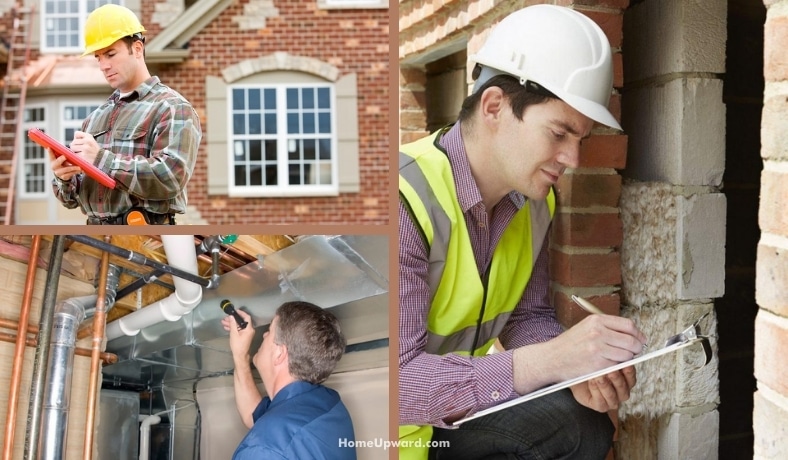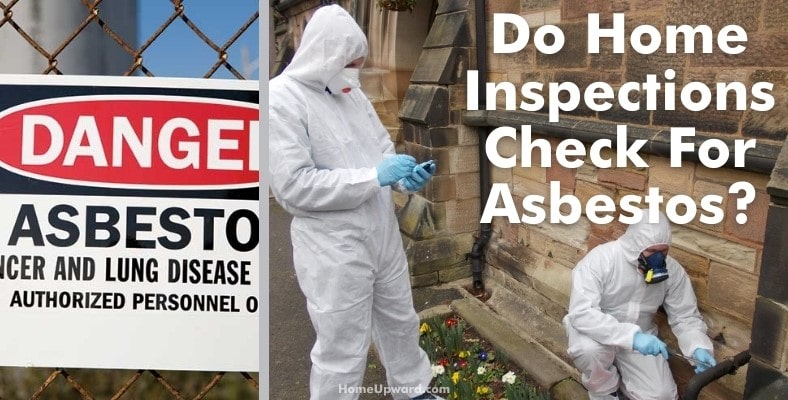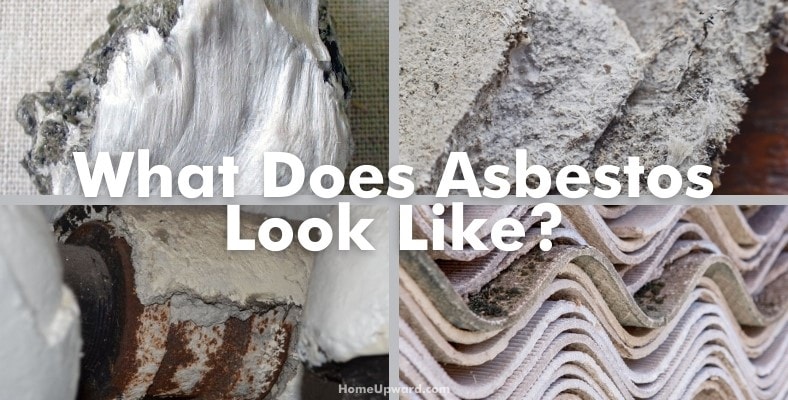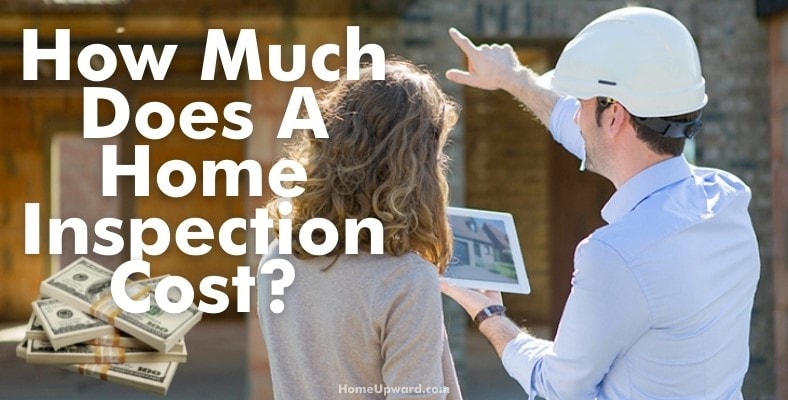Whether you’re renovating your home, building a new house, or about to buy one, it is important to know what you’re taking on. However, what do home inspectors look for?
Do home inspections check for asbestos? And what happens if you discover there’s asbestos in your house?
Contents
Do home inspections check for asbestos?
Unfortunately, most home inspections do not check for asbestos.
While some home inspectors are certified to inspect for asbestos, many are not – and they’re not required to, either.
Inspectors trained and certified to find asbestos are often specialists and charge an extra fee to either add-on asbestos to the standard inspection or as a solo inspection.
However, many home inspectors will report the presence of materials that they know may contain asbestos. It is up to you to take that information and organize an asbestos identification inspection.
Because a full asbestos inspection often involves scraping, drilling, or prying something from the building or structure. A complete asbestos evaluation is not generally conducted before closing on a house.
What is asbestos?
Asbestos seems to be a word that always causes problems in home improvement TV shows.
Asbestos is a natural mineral that is very great at reducing the effect of fire. It is a bit of a confusing term because it’s not just one material – it’s actually a term that combines six minerals. They’re a mixture of thin, long, fibrous crystals. Basically, they’re made up of tiny, sharp, hard-to-breakdown stones!
Asbestos was used in many building products in the 1940s. Until about the 1970s, it was a go-to option for cheap fire protection.
However, in the 1980s, asbestos was found to be very bad for your health and is no longer used in home building or improvement.
What do I have to do if I have asbestos?
The law varies on location.
If the material is covered, it won’t be a danger, and you don’t have to do anything. If it’s in good condition, it won’t break down and release its fibers.
However, if the fibers can move freely in the air, then you risk potential health issues.
Before you begin a repair project, many states require homeowners to test for asbestos. If your home was built before 1980, you could probably assume your home will have some kind of asbestos. If you are buying an old house, then your home purchase may come with a certificate that explains if there is asbestos in the home or not. If it cannot be airborne, then you will be fine to move right in.
Also, some states require that any asbestos removal is performed by a licensed contractor.
What does asbestos look like?
Asbestos is made up of tiny, rough fibers that are very rigid.
However, it was such a loved building material because it can blend with many other materials to create a very long-lasting building product.
It’s often hard to tell what exactly asbestos looks like, as it can be hidden within other building materials. It is much easier to notice what types of materials you can find mixed with.
Asbestos was used in:
- Large floor tiles
- Vermiculite insulation
- Ceiling tiles, especially acoustic tiles
- Heating ducts, or tape for those ducts
- Boiler insulation
- Pipe and boiler pipe insulation
- Cement siding
- Popcorn ceilings
- Flooring glue
The most dangerous type of asbestos is often the kind found in vermiculite insulation. In other words, the type of insulation you often see in your attic that looks like million tiny bits of fluff.
Where was asbestos used around my home?
Because of its great insulation and how strong it is, asbestos was used in many building materials before 1980.
Areas it may be found could be:
- Siding or roofing made with asbestos cement
- Insulation
- Textured paint
- Patches on ceiling joints and walls
- Artificial embers and ashes for gas fireplaces
- Stove-top pads
- Floors and walls that surround wood-burning stoves
- Vinyl flooring, or the backing on vinyl flooring sheets
- Pipes, especially those covered with tape, blankets, or padding
- Furnaces that burn coal or oil and door gaskets may have been insulated with asbestos.
When was asbestos banned?
Here’s an interesting fact: asbestos is not actually banned in the United States.
The U.S. is one of the very, very few industrialized countries that does not have an asbestos ban. The material is still used to this day in roofing, gaskets, fireproofing materials, and other products used in our daily lives.
Why was asbestos banned?
Asbestos is still legal in the U.S., though it is banned in over 50 countries worldwide. The U.S. issued a series of asbestos-related warnings in 1980.
In the early 1970s, the Occupational Safety and Health Administration(OSHA) and the Environmental Protection Agency(EPA) put measures to reduce the amount of exposure that workers could experience once they discovered a connection between deadly lung diseases and the building material.
The use of asbestos has been greatly reduced due to health and safety measures. In 1970 the Clean Air Act banned the use of asbestos and other dangerous air pollutants in sprays.
The Toxic Substances Control Act was passed in 1976, which banned asbestos, lead, and radon from being used in most paint.
In 1986 the EPA passed AHERA, which banned the use of asbestos in schools and set standards to inspect and remove it from schools built before.
Finally, in 1989, the EPA passed the Asbestos Ban and Phase-Out Rule, which was the first step to ban asbestos in manufacturing, processing, and importing asbestos. Unfortunately, asbestos manufacturers sued the EPA, and in 1991, the ban was lifted.
Asbestos can not be used in flooring felt, roll board, commercial paper, corrugated paper, new building, specialty paper, and sprays.
People exposed to asbestos have a higher risk of developing lung cancer, especially mesothelioma and asbestosis. The more asbestos fibers you are exposed to, the higher your risk of cancer and mesothelioma. The worst part – it can take 20 or 30 years for symptoms to appear.
How much does a home inspection cost?
In general, a home inspection will cost around $400 for a 2,000 sqft home.
If you have a large home, you might see that cost may increase.
Older homes may have more expensive inspections, as well, especially if you need termite, mold, or asbestos inspections.
A home inspector will look at and report on the basis of:
- The general grounds
- The structure, including foundation, doors, and windows
- Exteriors
- The roof
- Interior, including insulation, HVAC, plumbing, and the electrical
- The kitchen, bathroom, and high-traffic areas
In general, a typical home inspection will take around 3 hours. Larger homes, homes with multiple HVAC (Heating, ventilation, and air conditioning) systems, or areas that are hard to access may take longer.
Who pays for home inspections?
In almost every case, the home buyer is responsible for paying for the inspection.
Think of it like this: the inspection is like a report that shows you any repairs that will need to be handled by the seller at their expense, or fixed by you at a later point at your expense.
How much does it cost to remove asbestos?
The national average for asbestos removal is around $2,000. It can still cost anywhere from $500 to $5,000 or more, depending on how severe it is and the amount that needs to be removed.
Asbestos professionals will first conduct an inspection, take a sample, and assess the condition of the area.
They will give advice on how to fix the area, and if they are trained to do so, let you know how much of the site will need to be disturbed to remove all of the asbestos.
Some asbestos professionals can conduct the removal themselves. Still, others will likely recommend a firm that can perform the removal for you.
Before you allow the inspection to begin, ensure that you get a written contract that details how much work will be performed. If they remove asbestos, make sure they detail how much work will be done, how they will clean up the area, disposal, and what regulations concern your state and municipality.
Why can’t I remove asbestos myself?
In general, it is advised to not try to remove asbestos yourself. The fibers that can be released can cause severe lung damage.
However, you can remove asbestos materials yourself. The NACHI offers some safety steps to take should you wish to remove asbestos yourself, which include:
- Clear and seal the room
- Wear disposable gloves
- Shut off any cooling or heating systems
- Do not disturb more material than absolutely necessary
- Place plastic on the floor, and if possible, seal the entire room
- Wet the material first, which will reduce the number of fibers released
- Tightly seal the container the asbestos is placed in
- Dispose of it properly at a dangerous waste removal facility






